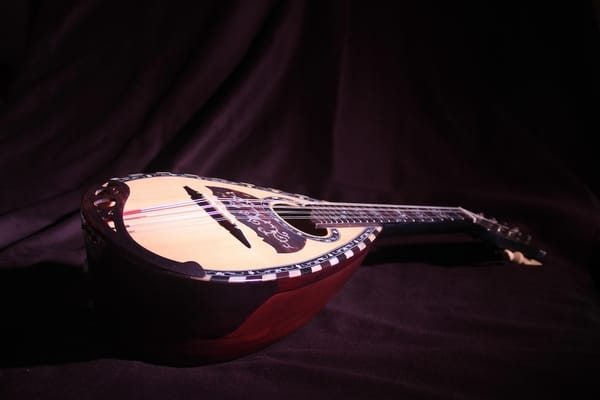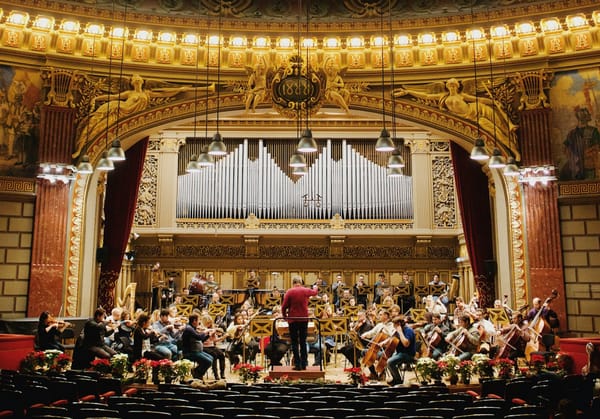Discovering the Charm of Toronto’s Elgin & Winter Garden Theatres

On the campus tour of the Elgin & Winter Garden Theatres, sighs and gasps are customary. As the doors open to reveal the Winter Garden Theatre, a collective “wow” comes up crooning like it is a rehearsed part of the tour. “It never fails,” Ellen Flowers, the Marketing and Communications Manager, tells us.
A glimmering landmark on Toronto’s busy Yonge Street, the Elgin & Winter Garden Theatres are a unique pair of theatres and a National Historic Site of Canada. The Winter Garden Theatre stands seven storeys above the Elgin Theatre, making them the last surviving Edwardian stacked theatres in the world.
Built in 1913, the complex was the Canadian flagship of Marcus Loew’s iconic theatre chain from New York City. Loew’s legacy is not unheard of, for he went on to own Metro Studios—the first M of MGM (Metro-Goldwyn-Mayer) Studios. One of the foremost designers of cinema theatres of the 20th century, Thomas Lamb, lent the two theatres distinct personalities. The Elgin, a formal theatre of plaster cherubs and ornate opera boxes, paints an opulent canvas with gold leaf detailing and rich fabrics. The Winter Garden, on the other hand, is a botanical fantasy. The walls were hand-painted to invoke the image of a whimsical secret garden, with a ceiling of real beech boughs and twinkling lanterns.
The theatres—complete with a proscenium stage, opera boxes, an orchestra pit and a balcony each—are stacked in an arrangement resembling a double-decker bus. They were designed for vaudeville, a popular form of entertainment at the time, centred around situational comedy and burlesque. It came to the US from France, perhaps borrowed from vaux-de-vire, which comprises satirical songs in couplets popular in the 15th century.
A typical vaudeville programme consisted of multiple acts featuring comedians, jugglers, acrobats, singers, dancers, magicians, ventriloquists, skits and more. The Elgin, then, was what was known as a grindhouse. It presented a continuous daily programme and for the price of one ticket, one could stay as long as they liked. This was primarily for the working classes while the Winter Garden Theatre on top had a higher ticket price. “But the funny thing is that it was the same playbill. Different classes enjoyed the same bawdy silliness of vaudeville,” Flowers tells us.
The acts were interspersed with silent short films starring Charlie Chaplin and Mary Pickford. Newsreels were shown too. During the First World War, Canadians found out what was happening on the battlefields of France through them.
By the late 1920s, movies were no longer silent and the audiences turned to the talkies for their entertainment, which led to vaudeville’s demise. The Elgin featured vaudeville until 1929 and then became a cinema. The Winter Garden Theatre had to shut down in 1928. It was in 1981 when the Ontario Heritage Trust took over the Elgin & Winter Garden Theatres to restore them.
Around the same time, the musical Cats came along to save the day and reinstate the theatres’ identity as a place for live performing arts. An initial run of six months went on for two years and was instrumental in reviving the Elgin. The building finally closed in 1987 for full restoration. The arduous process included tasks such as removing 25 layers of paint from the original surface of a lobby. Over 300,000 sheets of wafer-thin aluminium leaf were needed in re-gilding the plaster details in the Elgin and hundreds of pounds of raw bread dough were used to clean the hand-painted walls in the Winter Garden.
It is important to note that Canada, as we know it today, is a young country. It is therefore not common to come across fully operational buildings in the country which are over 100 years old. “Fortunately, both levels of government (federal and provincial) recognise this and we receive grants to help maintain it,” Flowers informs.
Today, the theatres present musicals, operas, films, concerts and stand-up comedy. The Elgin and & Winter Garden Theatres are ‘roadhouses’ as they are not inherently a producing theatre company. “Our theatres have unionised technical crews that are some of the best in Toronto and can adapt to different shows,” says Flowers. She recounts the time when a production of Slava’s SnowShow called for confetti to be blown out onto the audience that mimicked a snowstorm. “Right from the front of house to the housekeeping staff, we had to be unfailingly prepared,” she explains.
Recent performances at the venue have included a Christmas pantomime of The Wizard of Oz, Opera Atelier’s production of Handel’s Acis & Galatea and Robert Lepage’s Hamlet. Popular comics, including Alan Carr, Bassem Youssef and Ilana Glazer have also performed here.
Since 1979, the Elgin Theatre has been one of the hosts for the Toronto International Film Festival. Red carpets cascade down the golden staircase and movie-makers, paparazzi and cinephiles descend upon the theatre for around 10 days every September. “It’s electric,” says Flowers. Scenes from many movies, including Chicago and The Shape of Water, have also been shot at the theatres.
Several community initiatives are carried out frequently as the venue is nurtured by the Ontario Heritage Trust, an agency of the Ministry of Citizenship and Multiculturalism. The quest is to make it a people’s theatre. Each May, the theatres open their doors to all who wish to visit and explore the majestic campus. That the city’s governing body backs the theatres is often an indication of a city that cares. It is the backbone upon which the cultural evolution of a population rests.
Regular public and group tours are offered, welcoming locals and tourists. The guided 90-minute sessions recount the history and restoration of the complex. Walking through the original and new lobbies, the elegant theatres, and witnessing the world’s largest collection of vaudeville scenery ought to be a thrilling experience. On some days, though, the tours could send a chill down your spine.
It is not astonishing that the century-old palatial edifice has gathered curious ghost stories over time. What is interesting is the theatres’ tongue-in-cheek embracing of its friendly phantoms. A hit among visitors all year, the ghost tours at the Elgin & Winter Garden Theatres do not shy away from the grapevine. While most would do away with alleged stories that could deter audiences, the team at the theatres has turned them into a visitor attraction. So much so that Canada Post created a stamp of their most famous ghost, Lavender Lady. The name comes from the lavender scent she allegedly leaves behind.
The staff too has a sense of humour about it. “I participated in one of the tours for fun and my name was called out three times! Not sure what that meant, but I am here a lot so maybe the ghosts were worried I was working too much,” Flowers chuckles.
Loew’s motto proudly proclaimed, “We don’t sell tickets to just our shows but to our theatres.” The stately structures are indeed a sight to behold. No wonder that Sam, a trombone player in 1918, presumably enjoyed his time at the Winter Garden Theatre so much that he decided to stick around.
By Aishwarya Bodke. This piece was originally published by the National Centre for the Performing Arts, Mumbai, in the June 2024 issue of ON Stage – their monthly arts magazine.





